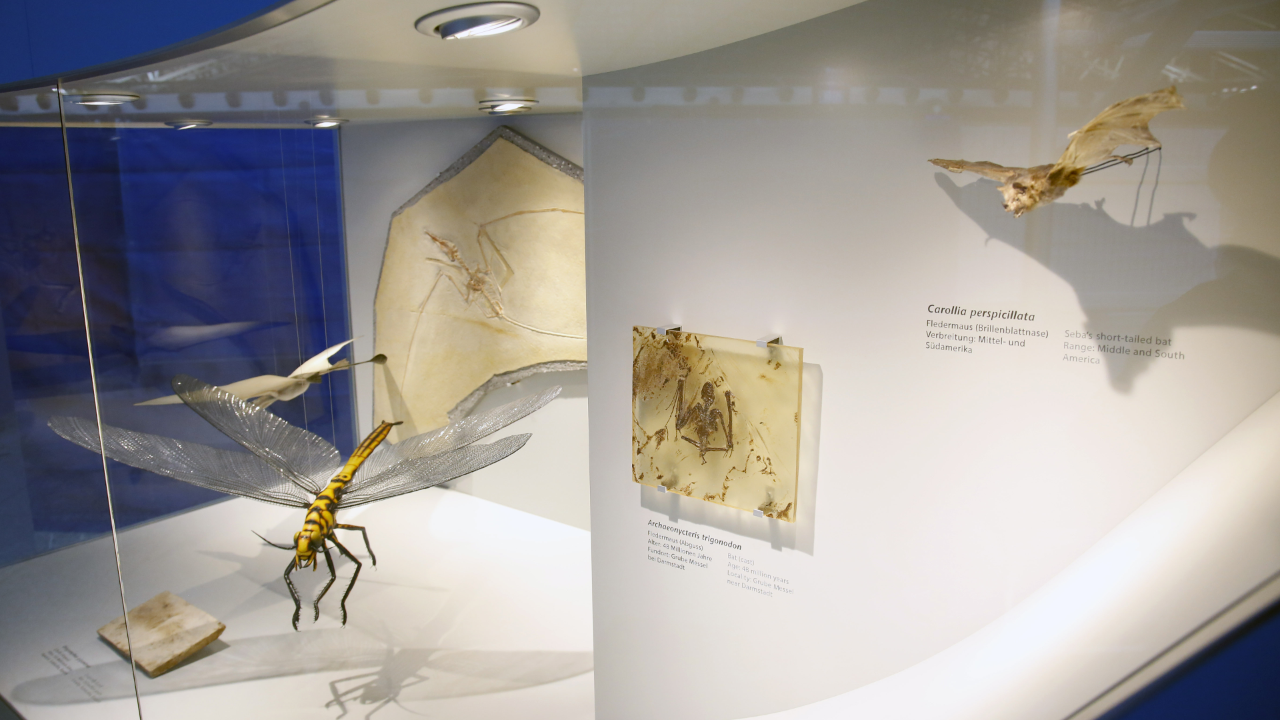GERMANY. What do octopuses and rockets have in common? How have pterosaurs inspired the design of gliders? A new exhibition at Frankfurt Airport aims to answer these and many other questions concerning flight and its ties with nature.
Evolution of Flight, jointly hosted by airport operator Fraport and Senckenberg Gesellschaft für Naturforschung (Senckenberg Natural History Museum), opened today, (26 January) in Terminal 2.
The exhibition is aimed not just at travellers but at all the estimated 200,000 people who pass through the airport every day. Fascinating facts about flight are presented in texts, pictures and videos on two ‘science cubes’ underneath large models of ancient flying reptiles.

Fraport Airside & Terminal Management Unit Senior Executive Vice President Dr Pierre Dominique Prümm said: “Frankfurt Airport is always an experience for guests and passengers, thrilling them again and again with new events, tailored services, leading-edge facilities and surprising activities.
“The exhibit isn’t something you would normally expect at an airport, but it makes a striking and memorable impression. Our excellent collaboration with Senckenberg is yet another example of how Fraport creates a Sense of Place to make Frankfurt Airport even more attractive by distinguishing it from other, more anonymous airports.
“Here two of the city’s foremost institutions, namely Frankfurt Airport and the Senckenberg Natural History Museum, have joined forces for the first time in a project with great public appeal.”
The exhibition aims to show how humans were inspired by nature – by insects, reptiles, birds and animals – to invent a variety of flying machines. It compares the machines with their archetypes to show how similar they are.

For example, a helicopter rotor is reminiscent of dragonflies, which are powerful and agile aviators. According to the exhibition organisers, species of the Aeshnidae family (known as hawkers or darners), fly at speeds up to 50km per hour while beating their wings 30 times a second. They can also accelerate 30 times faster than what is induced by the earth’s gravity, thus outperforming a state-of-the-art jetfighter by a wide margin.
“The lift-generating wings of aircraft are an ingenious feat of engineering that was inspired by pterosaurs, bats and birds. Interestingly, it is also possible to ‘fly’ in water: octopuses, for example, swim by jet propulsion, the same method that is used to drive spacecraft,” the exhibition organisers stated.
Senckenberg Natural History Museum Director General Prof. Volker Mosbrugger said: “The findings of our studies of the forms and functions of living organisms aren’t only of interest to a small group of specialised scientists. As the exhibit shows, they also have practical applications, in this case for designing aircraft. We’re therefore very pleased to be able to present this work not only in our museum, but also here at Germany’s largest airport.”
Evolution of Flight is open 24 hours a day near the platform of the SkyLine people mover in Terminal 2. Admission is free and Senckenberg Natural History Museum guides will show visitors around the exhibit on selected days. Further details are available here.













